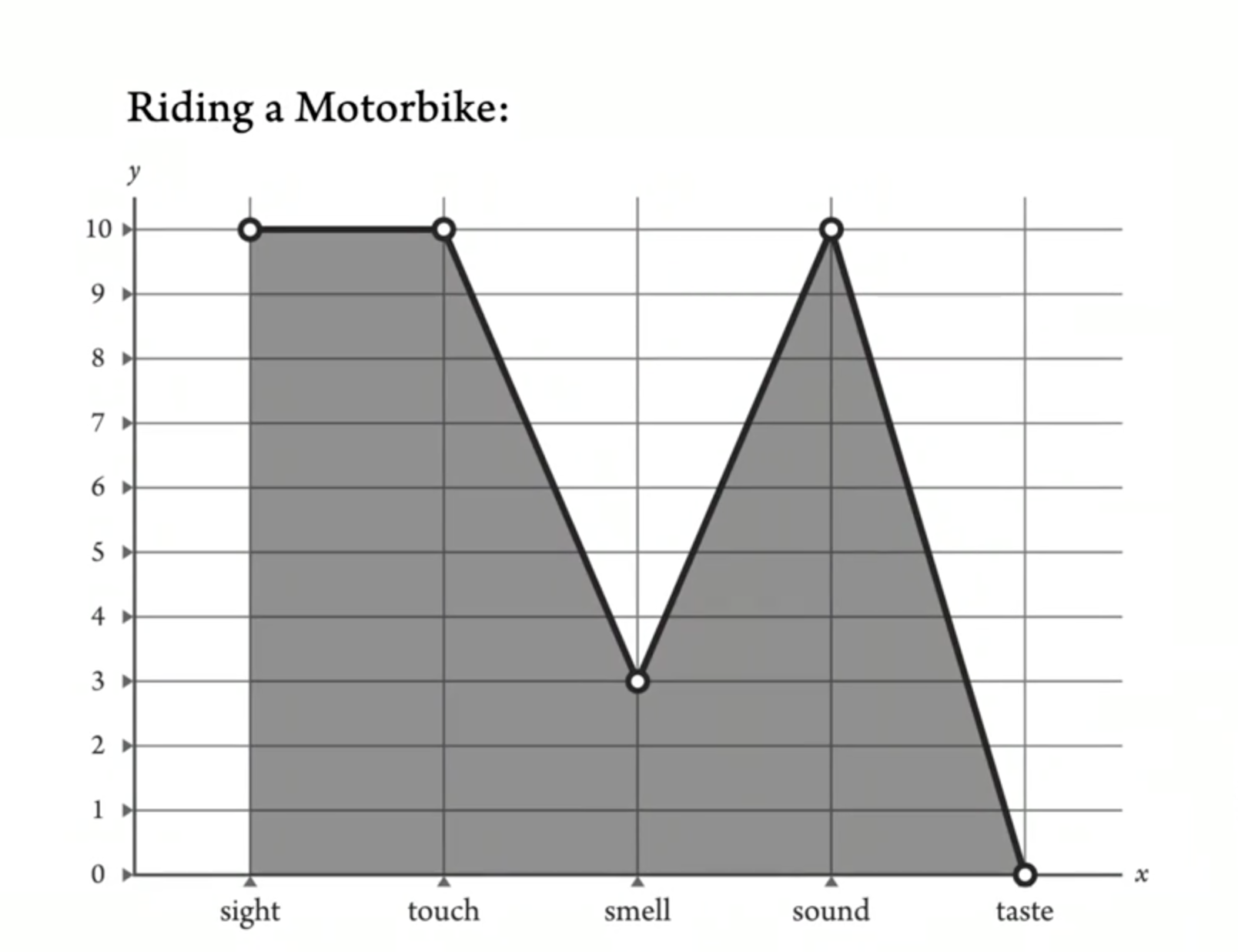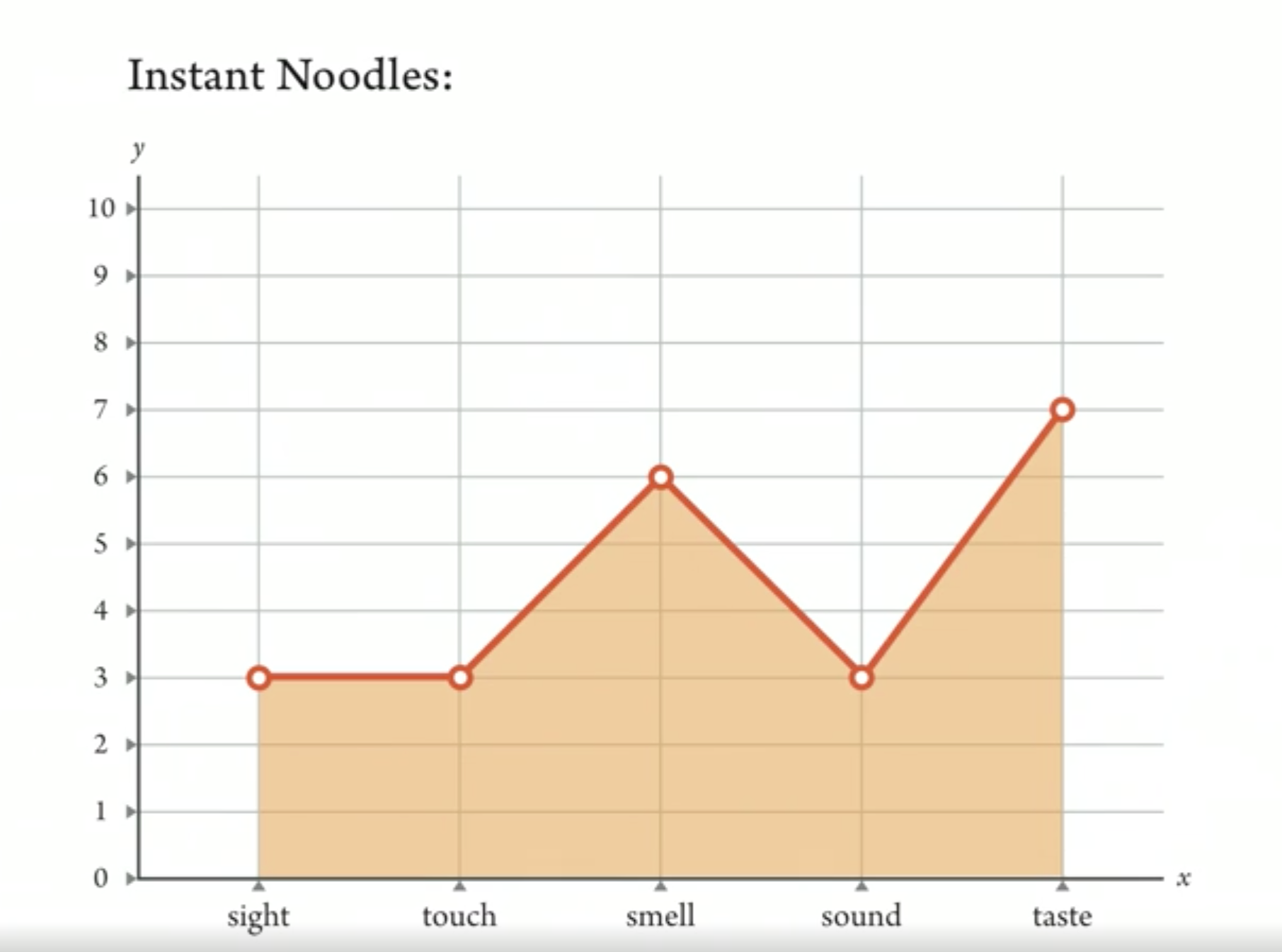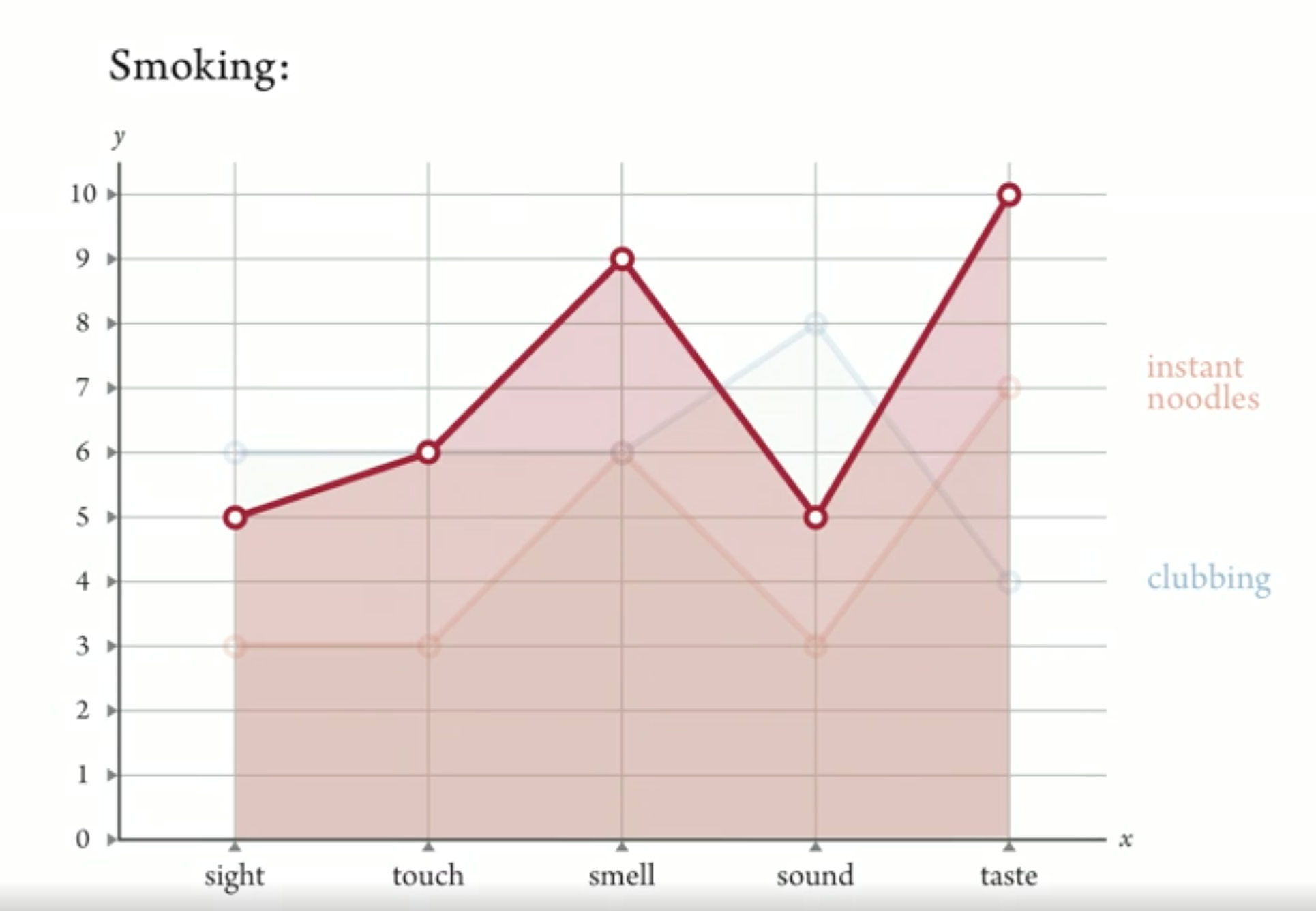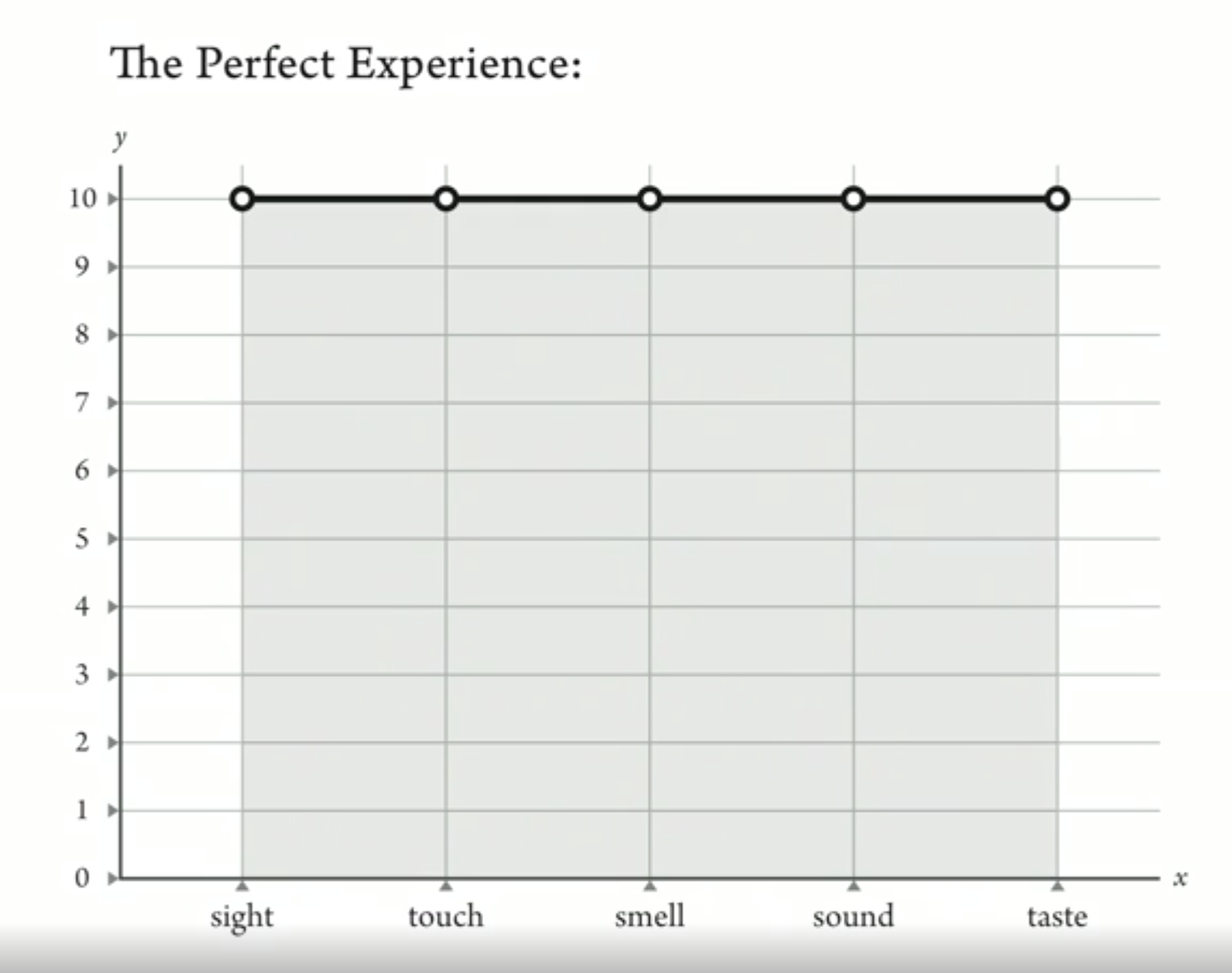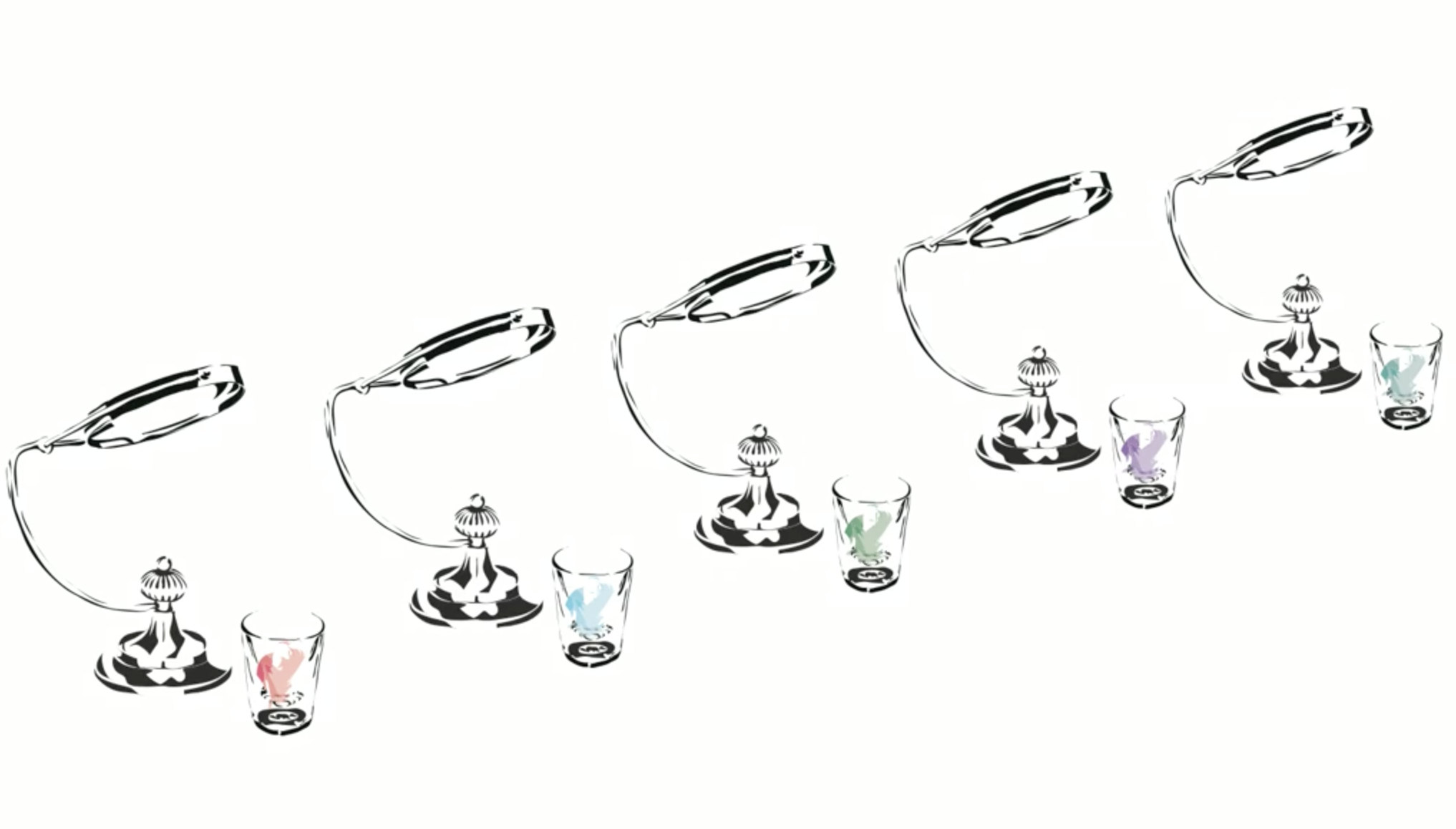Environment, human perception and design hold in a broader spectrum of possibilities and we are ignoring it ― our focus has become too narrow due to a subconscious effect: the dominance of vision.
Vision is the protagonist, taking up half of our brain's resources to process information. It's how we have always apprehended major threats, food supplies, and reproductive opportunity, placing our eyes as a principal way to collect data and ultimately, as the "most important" sense.
In Western Culture, sight has been historically considered as the noblest of the senses, shaping its discoveries and proficiency. Plato considered vision as "humanity's greatest gift" and prominent early modern figures like Da Vinci and Galileo favored sight among senses: (1)
“The eye is the principal means by which humans appreciate the infinite works of nature.”
During the renaissance the five senses were separated even more distinctly, being understood in a hierarchical system from the highest sense of vision down to touch. (2) From these precedents, we carry a strong bias into the value we assign to sensory qualities other than visuals.
Inevitably, the neglect of other senses is also evident in design, in the way it is conceived and even in the way it is taught. In architecture school it was always about how it looked, functioned and got built. Rarely did we sustain a discussion of the tactile or olfactory approach of the proposals.
“What is missing from our dwellings today are the potential transactions between body, imagination, and environment.”
However, as Juhani Pallasmaa affirms in his book The Eyes of the Skin: Architecture of the Senses (which is a wonderful read about this subject), the way space feels, the sound and smell of these places, has equal weight to the way things look.
Likewise, Japanese designer Kenya Hara acknowledges the importance of senses introducing the term "senseware" to indicate any familiar thing that inspires our sensory perceptions (3).
Hara states, "human beings are a bundle of very delicate receptor organs and at the same time, an image generating organ equipped with a vigorous memory-playback system. An image generated is a spectacle orchestrated through multiple sensory stimuli and revived memories. This is precisely where the designer works." (p.156)
Information architecture. Hara, K. Designing Design. P. 156. (2015)
As designers, we create an architecture of information within the mind of the spectator. This message is captured through the assorted perception channels of sight, touch, taste, smell, hearing, and other aggregated senses to produce what we consider an "image."
Additionally, it is fundamental to understand that the created image is not only based on external input, but is also constructed by memories evoked by these sensory stimuli. In fact, as I commented on previously, concepts and memories are the main construction material for our perceived world.
The mind and the body. Hara, K. Designing Design. P. 157. (2015)
Contrary to the notion of the supremacy of vision and its intrinsic relationship to the brain, Hara considers the mind is not singular and seated within the head; it exists throughout the body, like a system of tsubo, or acupoints.
This vision is the core of multi-sensory design, with the idea that we must approach the act of design by targeting the body's multitude of brains. The concept acknowledges that people experience and react to space in many ways, consciously and unconsciously by receiving input from all sensory organs.
Designing for the senses is a game changer.
Jinsop Lee, a multi-sense designer, speaks about the subject in his TED Talk, making emphasis on how many of life's greatest pleasures (like eating and sex) are enjoyed deeply because of the presence of multiple senses interacting at the same time.
He introduces The 5 Senses Graph, to evaluate different experiences in his life:
According to this chart, the ultimate experience is one that combines all of the senses in a maximum scale. Nevertheless, the intensification of only one of the senses can completely shape a concept and develop an innovative, brilliant product.
A clock that tells the time by emitting different scents according to the sun's movement through the day - Chris Hosmer.
A toothbrush that tastes like candy, until the flavor runs out to indicate its time for a change - Jinsop Lee.
A tv remote control that incorporates clarinet keys to enhance its tactility - Jinsop Lee.
We must exploit this astonishing capacity we have to perceive and grasp unconsciously and peripherally complex environmental entities and atmospheres. Every experience in design is multi-sensory, whether we want it or not.
Instead of limiting ourselves to a result that merely looks good and functions properly, we can introduce elements of power to communicate and seduce the user.
In this way, multi sensory design can be conceived as an effective orchestration of sensory messages. We can enrich our performance by including a much broader catalog of instruments and techniques. A cadence of shadow and light, a range of pleasant smells and a peak in texture can denote a well-thought composition and mastery of the art, impregnating the project with enormous enjoyment for the user.
It is a praise of Bachelard's notion of the "polyphony of the senses", a search for design in its fully integrated and spiritual essence.
More from the series on multi-sensory design:
Further learning:
A masterclass on Multi-sensory Design: learn the basics of human perception and strategies to create more delightful products and experiences
References
(1) Plato. (2008) The Republic book VII, trans. Benjamin Jewett. New York: Cosimo, Inc.
(2) Pallasmaa, J. (2012) The Eyes of the Skin. Great Britain: Wiley-Academy.
(3) Hara, K. (2011) Designing Design. Baden: Lars Müller Publishers.
(4) Lee, J. (2013) Design for all 5 senses. Official TED Conference 2013. Retrieved October 30, 2017 from: https://www.ted.com/talks/jinsop_lee_design_for_all_5_senses#t-86313







